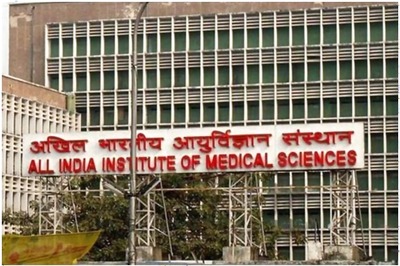
views
India’s agriculture and its allied adequate produce are not sufficient to ensure food security. Not all food produced is consumed and an enormous amount is wasted due to the unorganised and inefficient logistics sector. The losses impact farmers with reduced income and consumer with increased costs.
As per the Food and Agriculture Organization (FAO) report, about 33% of India’s agriculture and allied productions are wasted, which would be enough to feed 195 million hungry people. Maximum food loss happens during transit from farm to fork at various stages of the supply chain.
It is hoped that the recently launched National Logistics Policy (NLP) will be cost-effective and efficient to limit the losses of perishable commodities by improving cold supply chain efficiency and cold storage facilities to leverage export-oriented agriculture and allied sector.
A study undertaken by the Indian Council of Agricultural Research-Central Institute of Post-Harvest Engineering and Technology (ICAR-CIPHET) estimated that due to the lack of infrastructure for short-term storage, particularly at the farm level, as well as the lack of intermediate processing in the production catchments, approximately 165 lakh tonnes vegetables, 78 lakh tonnes fruits and 45 lakh tonnes food grains are lost to the tune of Rs 1.68 lakh crore.
In 1990, India’s cold storage capacity was only 7 million tonnes, which grew by around 1 million tonnes per year between 2015 and 2020, from 32 million tonnes to 38 million tonnes. However, the concept of an integrated cold chain across the country is still missing, with greater emphasis being placed on single-commodity cold storage.
Three-fourths of the cold storage in India is meant for horticultural produce, while the rest is for livestock products. Most cold storage units (72%) are single-commodity units. Of the horticultural units, 68% are being used to store potatoes. Only 40% of them have sorting, grading, and pack house facilities. There is a need to develop modern cold storage solutions with additional services as they can propel production and profitability.
Presently, cold chain development will remain exclusive to a few exporters unless policies are introduced to enable small farmers and farmer-producer organizations to harness its benefits. Small farmers growing fruits and vegetables cannot harness the cold chain as the bulk of cold storage units and refrigerated transport are used by potato traders and for livestock products and dairy. Solar-powered, small-size cold storage units for pre-cooling at farm gates can be set up.
In India, studies have noted that reducing food loss through efficient logistics and cold chains can enhance farmers’ incomes by leveraging lucrative markets in India and abroad. Possible pathways for realising higher farmer incomes through loss reduction include leveraging faraway markets by extending products’ shelf life, diversifying to high-value crops, and enlarging buyer bases.
For the consumer, it helps normalise the price of fruits and vegetables temporally and geographically. A well-connected cold chain improves the availability of diversified foods, makes them affordable and accessible, and, most importantly, creates growth and employment opportunities through backward integration, including in the catalysed food processing sector.
Solutions to food loss reduction should take into consideration farmers’ perspectives on education, harvest techniques, storage and cooling facilities, and supply chain infrastructure. Improvements in the cold chain from production to consumption drive down food losses. A large number of relatively small farmers participate in and directly benefit from cold storage by accessing better storage conditions for their seeds and selling directly after harvest.
The farmer-producer companies (FPCs) in Punjab and Haryana demonstrate the need for cold chain solutions to enable farmers to sell fruits and vegetables in new and rewarding markets. The lacklustre development of the food processing industry is attributed to infrastructural gaps in the integration of cold chains and their lopsided development. There are large gaps in the availability of pack houses, ripening chambers, and reefer trucks — 99.6%, 91.1%, and 85.4%, respectively.
The fruit supply chain at Azadpur Mandi, one of the largest markets in the country, is handicapped due to the lack of cold chain infrastructure. Studies reveal that pre-cooling and transport refrigeration can reduce food loss by 32% in open trucks, 9% in reefer trucks, and carbon dioxide equivalent emissions by 16% .
It is worth mentioning here that out of the total sown area the net area under vegetables and fruits is around 15 % and the losses are disproportionately higher (50%) than most cultivated crops like rice and wheat. On the other hand, food inflation in recent times is tied to the higher prices of vegetables and fruits, which are a consequence of their supply shortages.
It is hoped that the National Logistic Policy will focus on green logistics systems to incentivise resource-poor farmers, farmer producer organizations (FPOs) and self-help groups to harness cold chain facilities to maximise returns from farming.
The cold chain infrastructure will be effective and expand and fructify only when it moves to resource-poor farmers who are struggling to create better livelihood opportunities by cultivating high-value crops.
Upgrading cold chain facilities will improve welfare by benefiting both producers and consumers. The scope of the cold chain has grown to include increasing the efficiency, precision, and speed of transportation and parameters for protecting the quality, texture, and freshness of the produce. This comes with the emergence of cutting-edge technologies that enable food tracking and create real-time data on the movement of refrigerated cargo.
Therefore, under the National Logistic Policy, there is an opportunity to ramp up cold chain facilities to made available varieties of nutritious food at affordable prices to the consumer basket.
The writer is Vice Chairman of Sonalika Group, Vice Chairman (Cabinet Minister-Rank), Punjab Economic Policy and Planning Board, Chairman, ASSOCHAM Northern Region Development Council. Views expressed are personal.
Read all the Latest Opinion News and Breaking News here




















Comments
0 comment